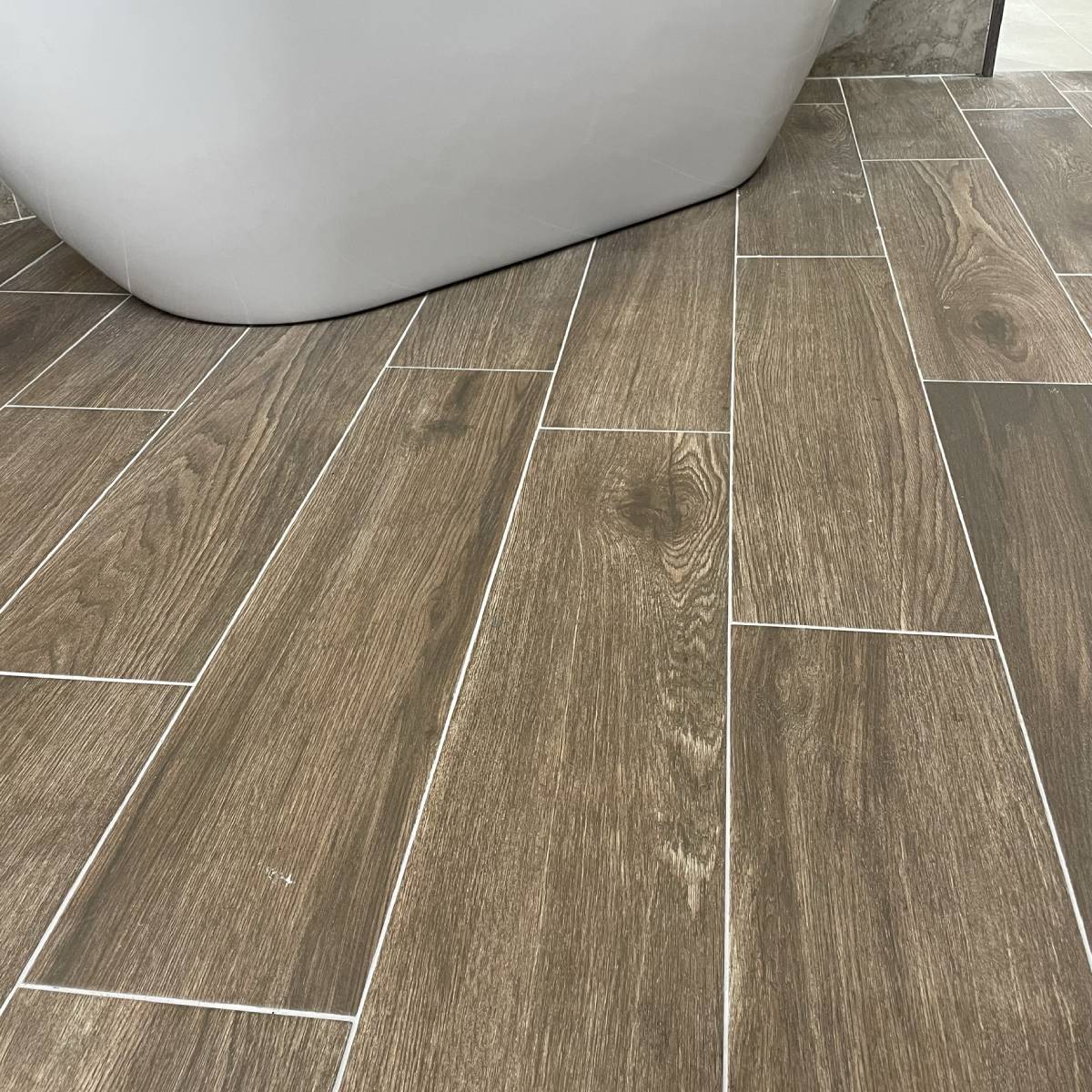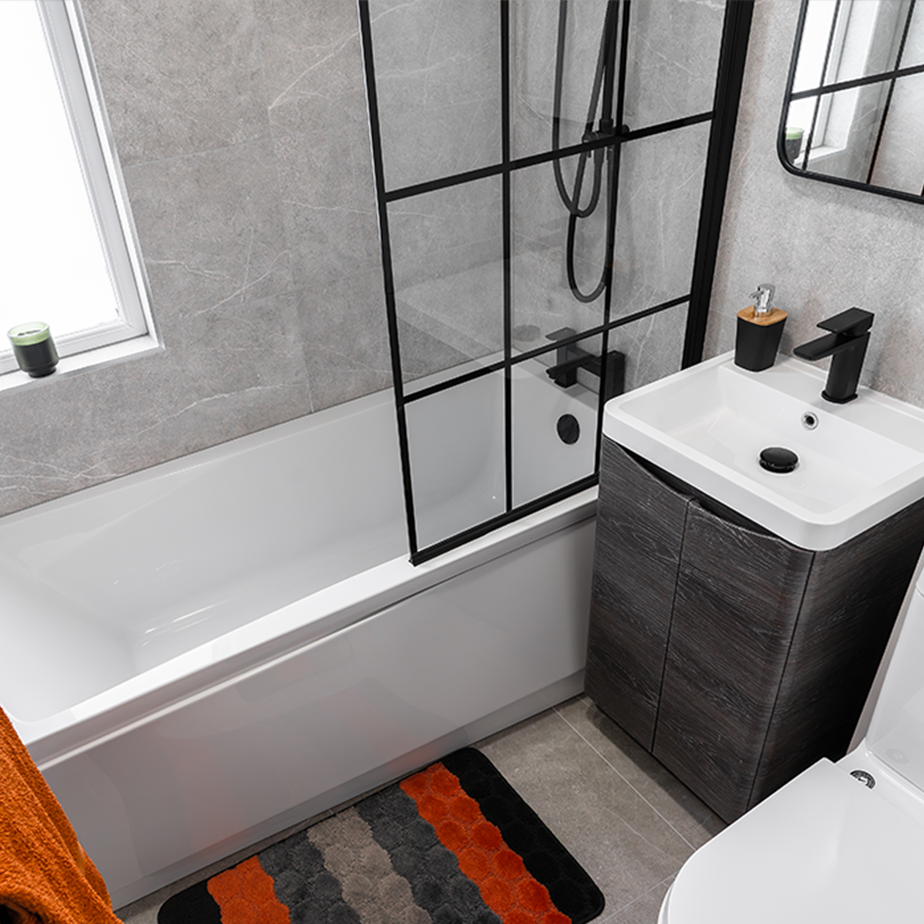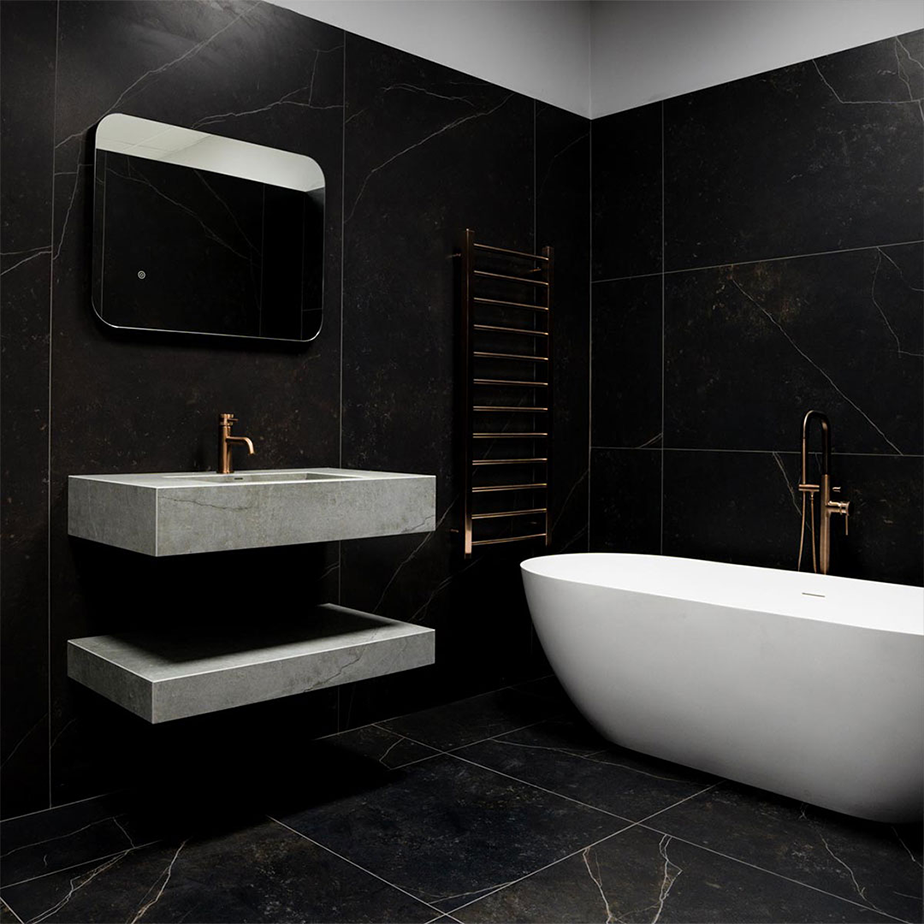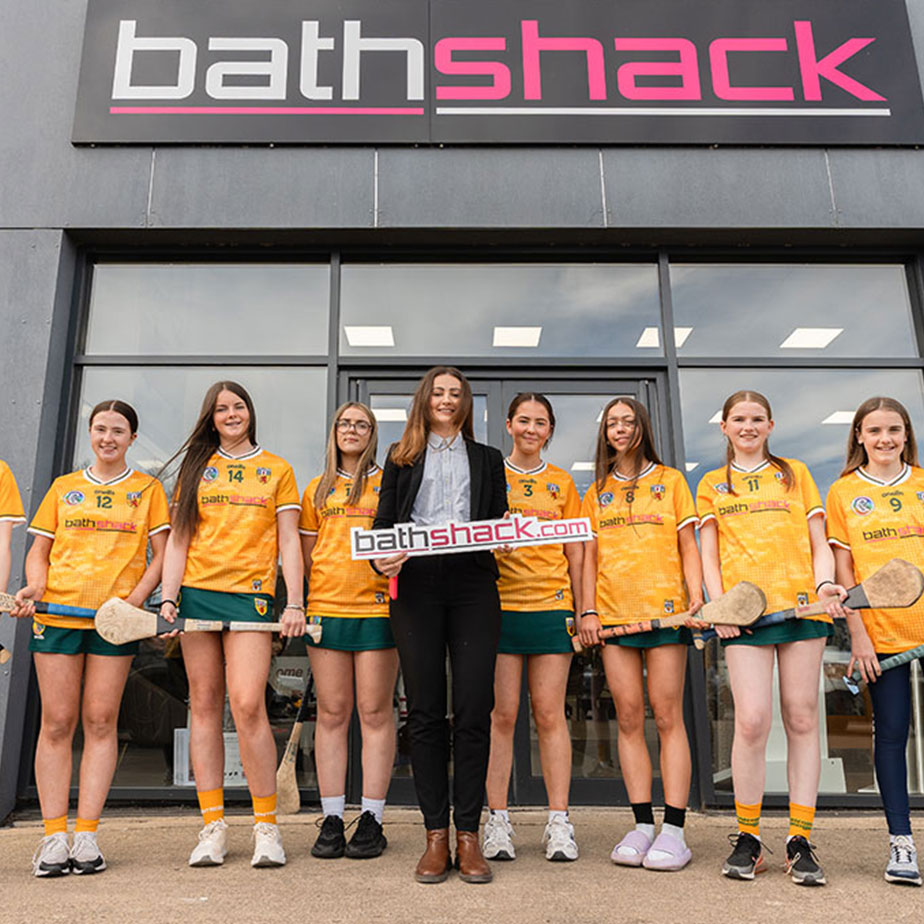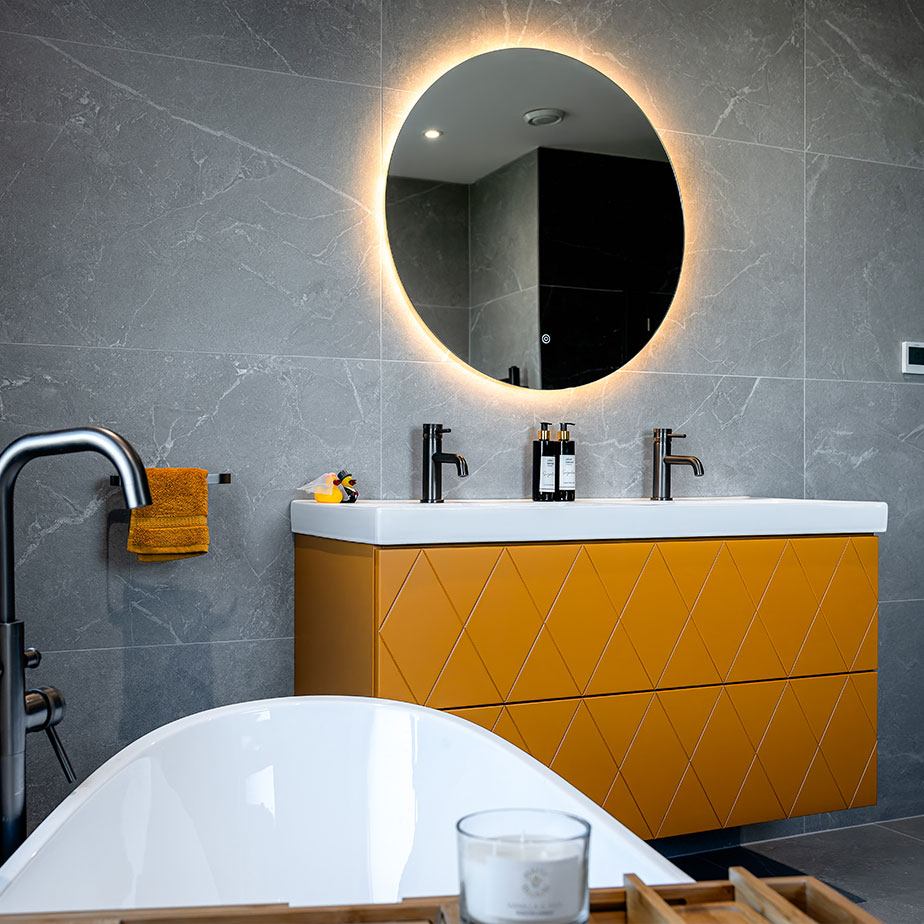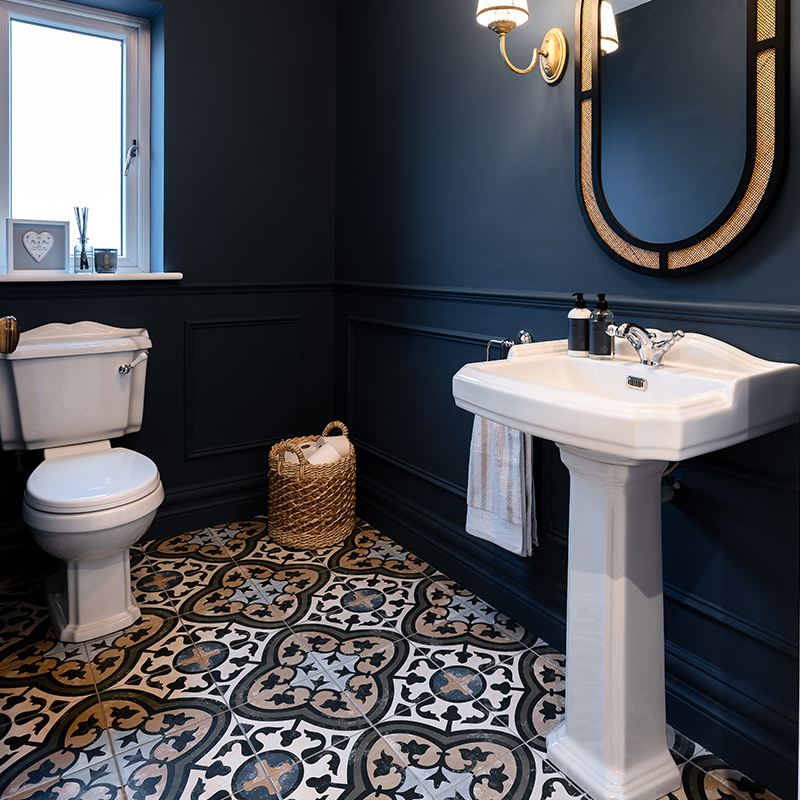Adding texture to your bathroom
If you have an interior design project on the go, then considering the texture of your décor is a great way to create a more interesting and original space.
From tiles and panelling to mirrors, accessories and more, there are lots of ways in which you can bring texture into your home and make it both more welcoming and aesthetically pleasing. Doing this can also add warmth and better complement the style you want to achieve, if you build up layers within a room using different materials, fabrics and designs to create anything from a contemporary to a traditional look.
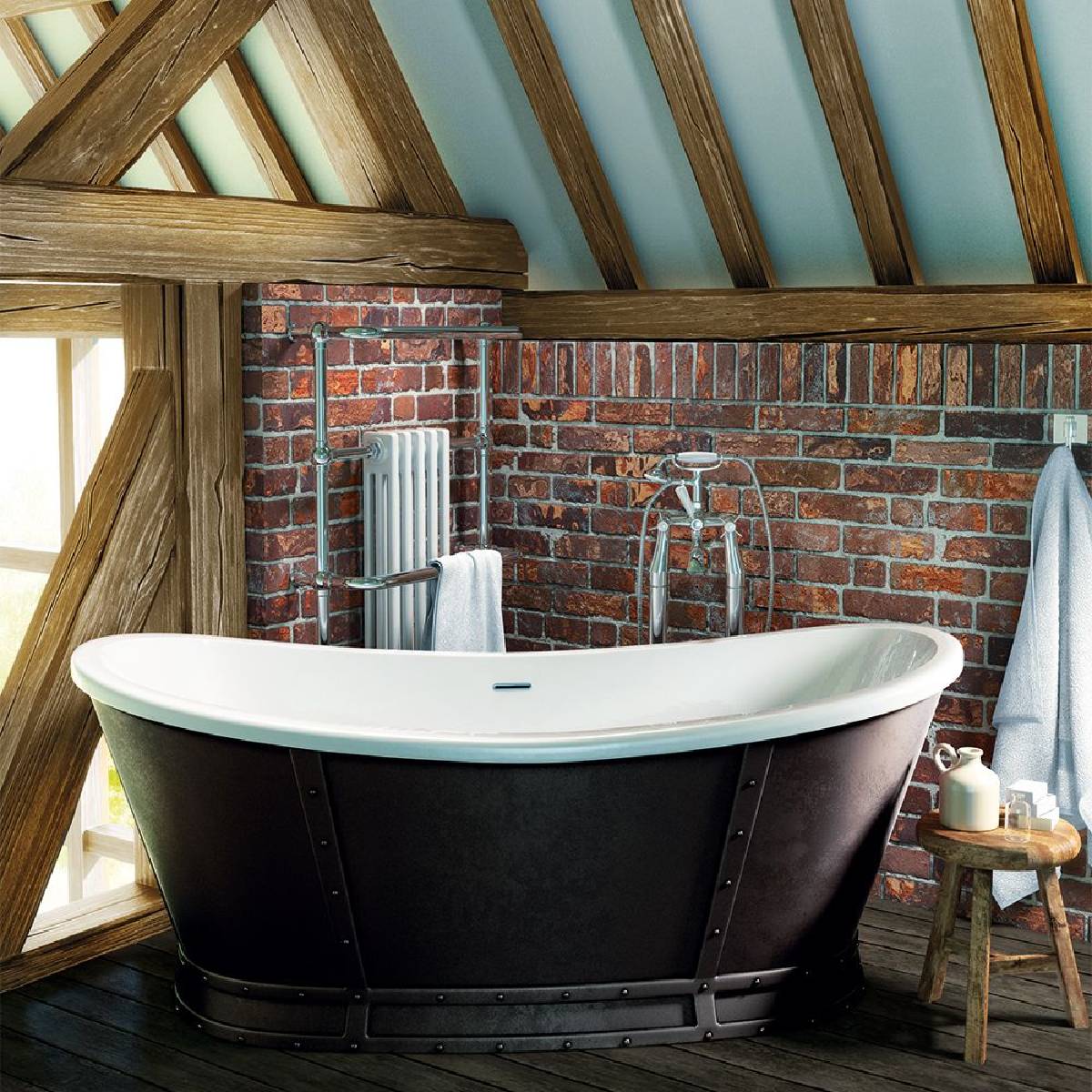
Mixing different materials such as wood and metal, along with contrasting fittings will add texture.
Practically, matt textures are useful in terms of giving grip to a floor, for example, which is particularly important in a bathroom, where water can spill over. Gloss finishes, meanwhile, can help save you time, as smoother surfaces are easier to clean – something worth considering, if you don’t like to spend very long cleaning. Texture further adds depth and dimension to a room, making it more vibrant and preventing it from appearing flat and lifeless, so it’s good to think of this as you plan your interior.
With all of that in mind, we’ve compiled some ideas below on how to add texture to your bathroom and cultivate an attractive and alluring interior …
The art of visual texture
A technique used copiously by interior designers, the art of visual texture all hinges on mixing materials and being skillful with layering to create a tactile space which is inviting and presents the room at its best.
It’s therefore good to know from the outset what look you’re aiming for – whether that’s sleek and modern with glossy surfaces, for example, or a more Cottagecore vibe with rustic, natural textiles – and then to build up the layers from there.
If the cottage trend is for you, then using various wood combinations, with all that natural grain detailing, will give a rustic vibe and a more natural aesthetic. Integrating contrasting textures to this look, however, will help to create the layered look – for example, you could use wood-effect flooring with a rougher, or matt texture, alongside a smooth wall tile, or one with a pattern.
The Alberto Cedarwood Wood-effect Floor Tile in Ceramic has an authentic grainy wood look while also being easier to care for than real timber. It’s therefore a good choice if you want the appearance of timber without the fear of warping or scratching. The ceramic also makes this a robust tile which will last long into the future, for your peace of mind.
Fluted features for added flair
Glass is another way to add texture to your bathroom and, if you have a shower, then fluted products continue to be very popular.
Indeed, fluted shower screens are an inspired choice, as their unique ridged glass – also sometimes referred to as ‘textured glass’ – has a beautiful undulating design with those vertical glass grooves, which add an instant allure.
The ribbed or fluted features of the Nuie Fluted Wet Room Screen, for instance, create a ripple effect on the glass, diffusing light rapidly across the surface and resulting in a more well-lit space.
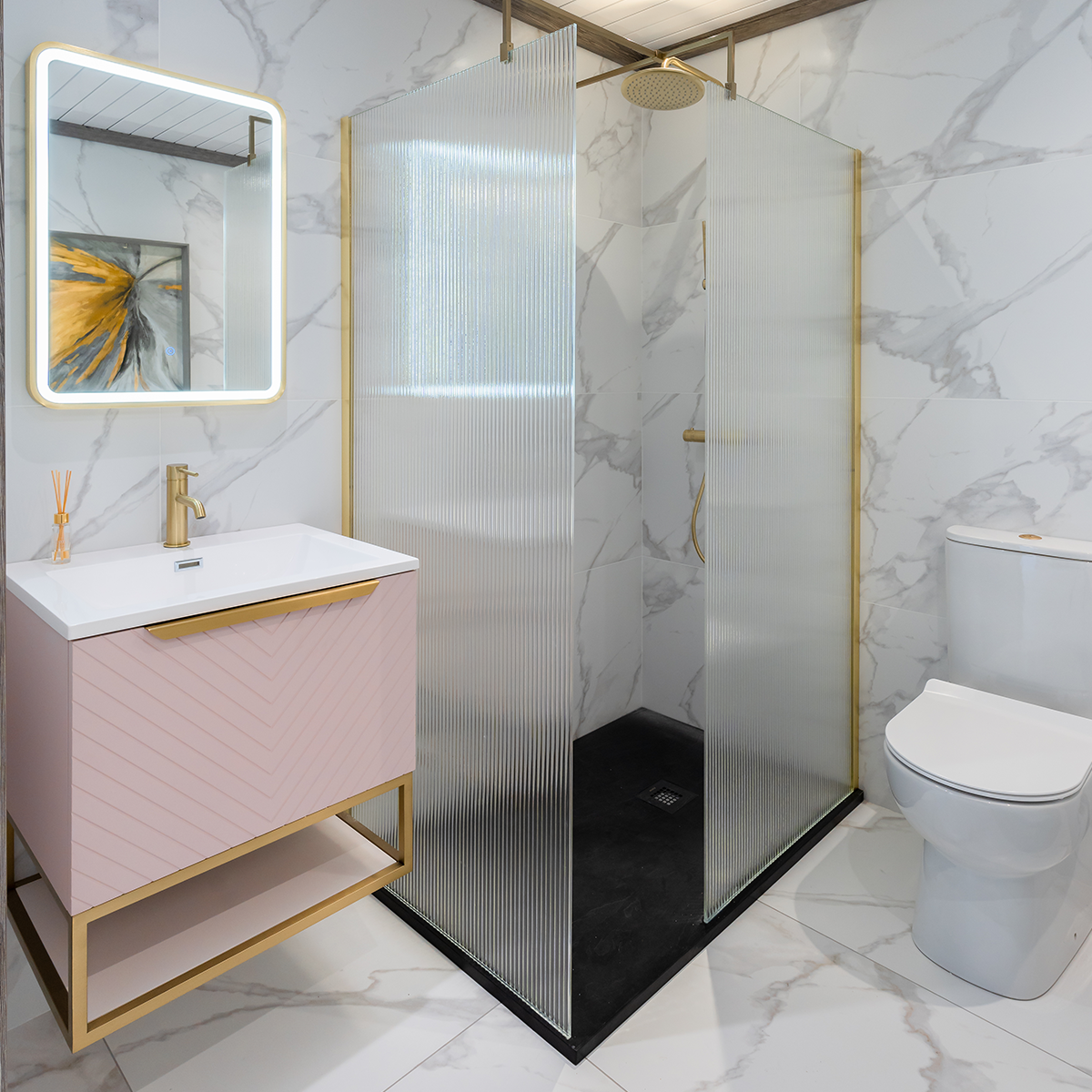
The Nuie Fluted Wet Room Screen will add texture with its ribbed glass design.
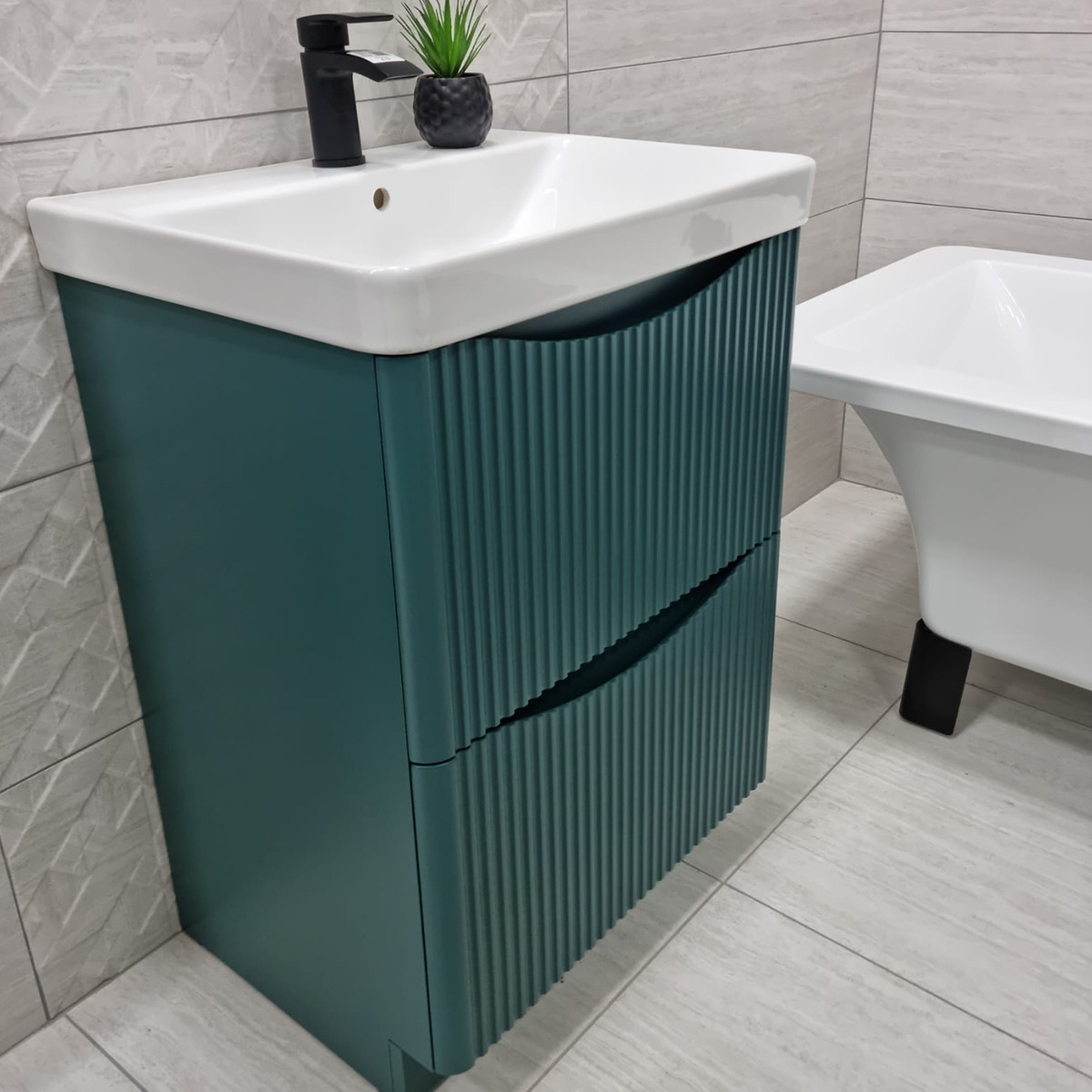
The Josef Martin Happi Full Fluted Floorstanding Vanity Unit and Inset Basin.
In addition to this, the textured glass also serves to cleverly distort the view so you can enjoy privacy while showering, with the overall effect one which ultimately adds detail, depth and texture to the room.
Similarly, fluted vanities have that same ribbed/fluted design, again, adding dimension and texture and being both visually and tactilely compelling.
The front of the Josef Martin Happi Full Fluted Floorstanding Vanity Unit & Inset Basin in Goblin Green MFC, for instance, has an attractive textured front, with double drawers featuring the fluted look and a handle-less design.
Fixtures with finesse
The optional brassware, chrome and black matt detailing on the fluted shower screens add further embellishment and texture, with these contrasting materials also being great in general for achieving texture elsewhere. For example, using brass fittings like handles, taps and toilet roll holders will add warmth to your bathroom, while your choice of lighting – perhaps sidelights on either side of a mirror – will do the same.
Brass – whether brushed or polished – can be used to create a bold statement, while a matt black material can evoke a chic modern look which create impact in a different way, drawing on a more contemporary style.
Using natural materials – or products which create the same effect – also add texture, with stone and wood-effect, along with organic shapes and materials, very effective in this way.
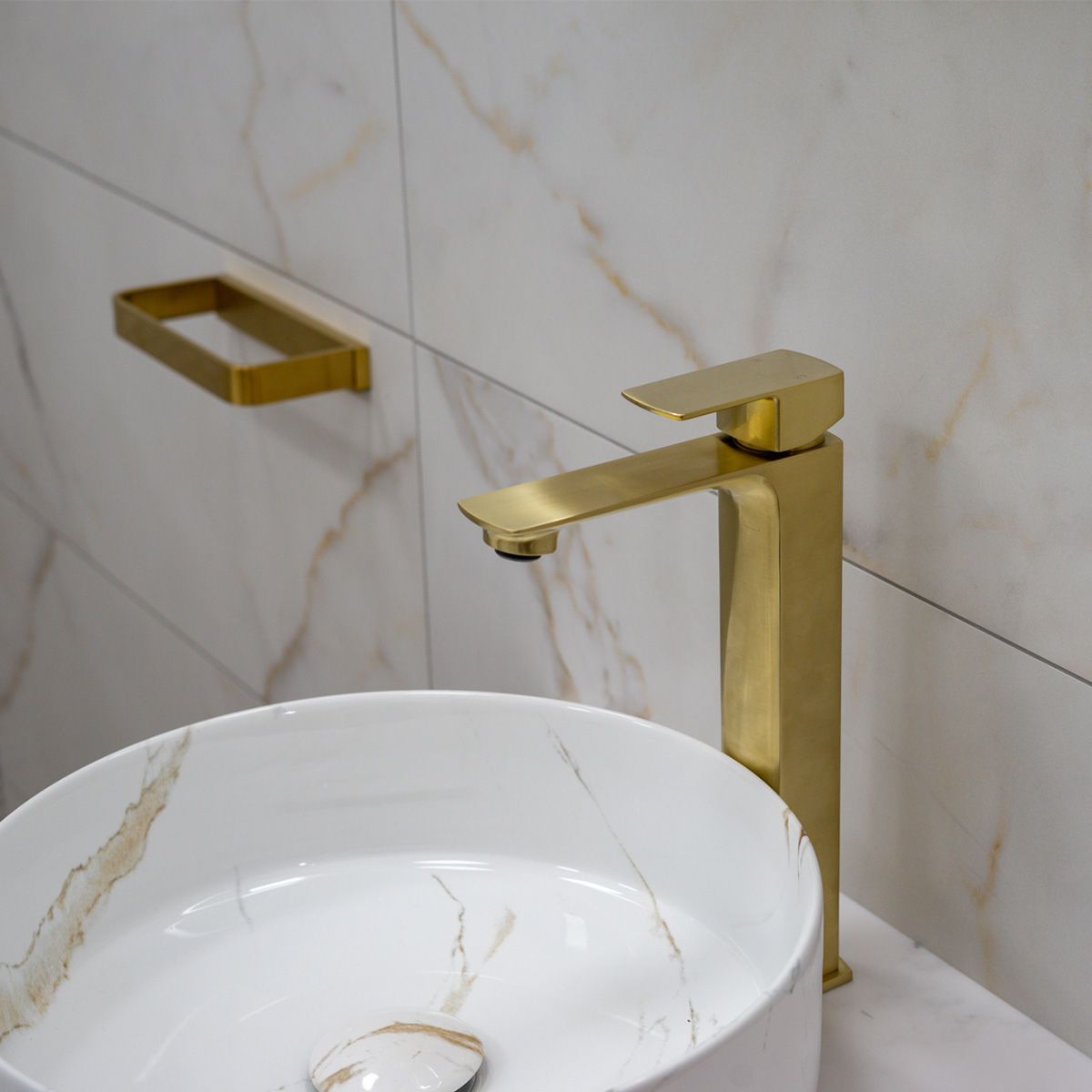
Gold fittings can add texture and warmth to your bathroom.
Textured tiles and accessories
When it comes to bathrooms, there are more ways than ever to create a beautiful, textured space. Tiles are available in myriad finishes – made from porcelain, ceramic and vinyl, for example – while they can also have bevelled edges and all sorts of designs, patterns and shapes. [Check out our blog on Textured Tile Inspiration for more ideas in this vein].
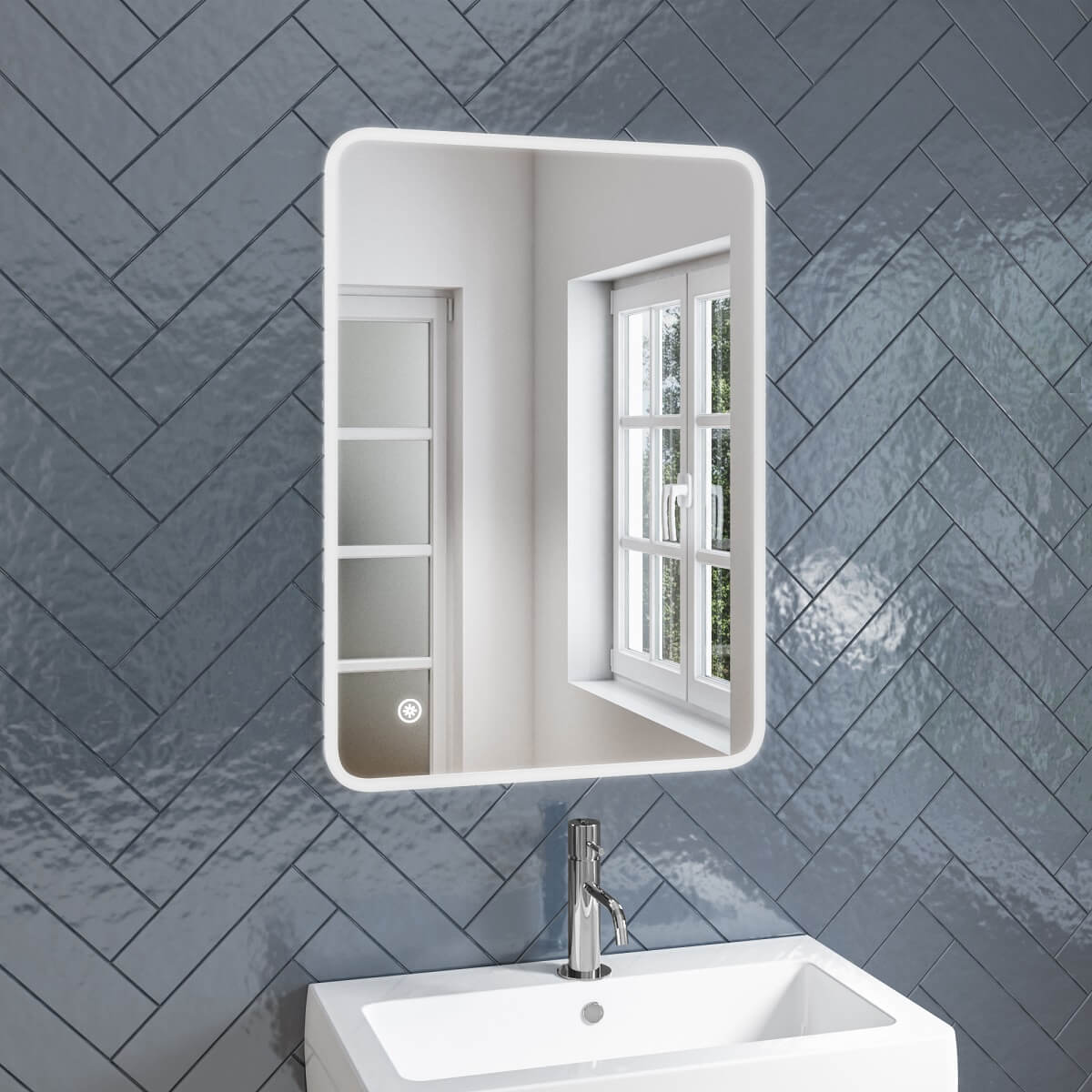
Gloss tile finishes, geometric layout and mirrors can all add texture to your bathroom and create a more interesting space.
Geometric designs are currently a popular tile trend which will instantly add depth to a space, creating a vibrant, interesting aesthetic which also creates a more characterful look. Metro tiles are another inspired way to create texture, with their precise rectangular shape and assorted finishes, including gloss and matt, along with optional bevelled edges.
As a final finishing touch, accessories are always recommended to complete any interior design and give another opportunity for layering materials. Mirrors can add depth to a space, while smaller items like bath caddies are great for bringing in wood-effect detailing.
Whatever your bathroom style there are all sorts of ways to get creative when it comes to adding texture within your space – whether large or small. Just begin with a starting point for your interior design and then work your way up from there. And, if you need a little guidance, then our expert team is always on hand to help!
If you’d like some help in creating a textured bathroom, why not visit your local Bathshack showroom and have a chat with one of our team. Alternatively, email us at info@bathshack.com or call (028) 9077 0188.
